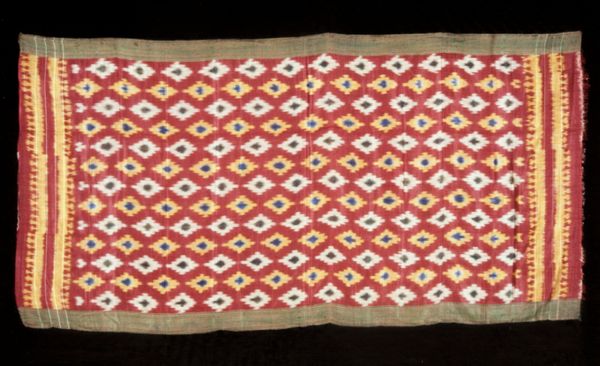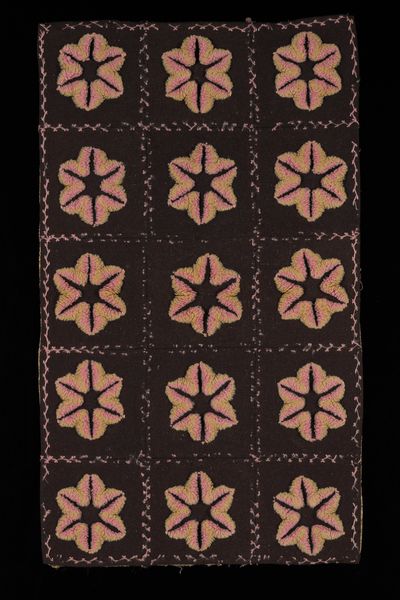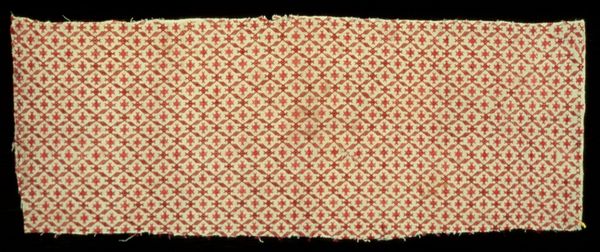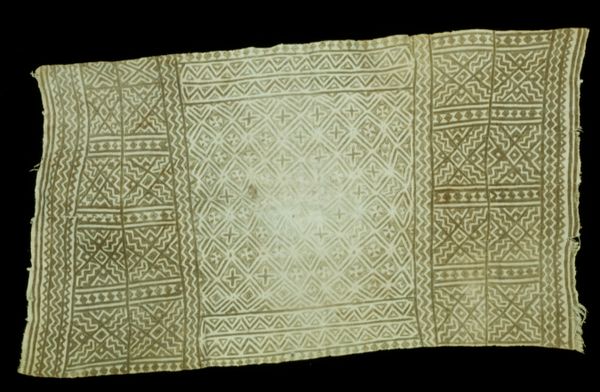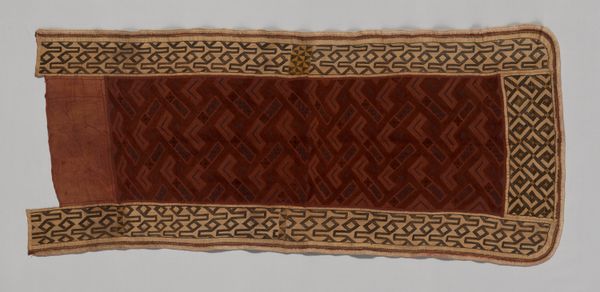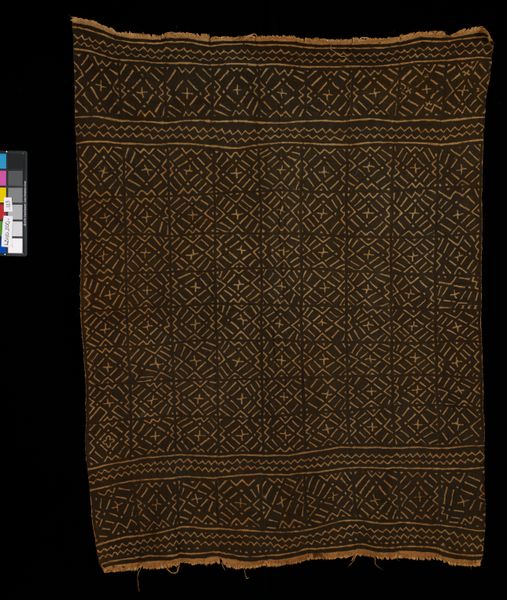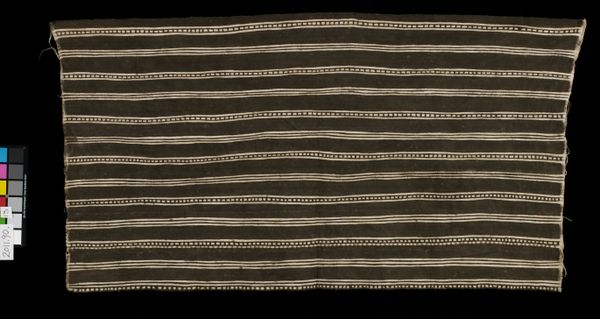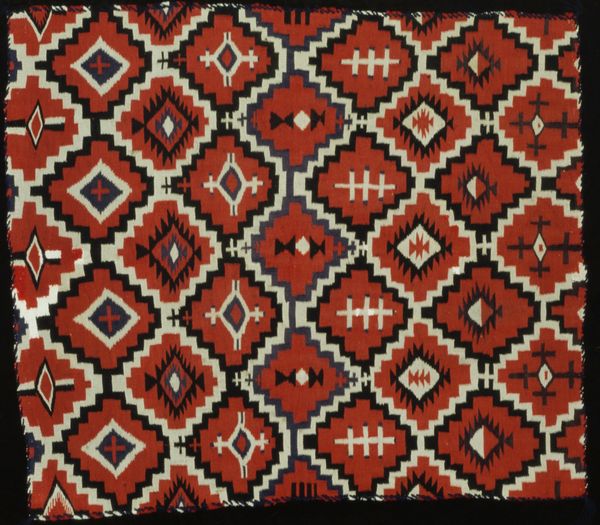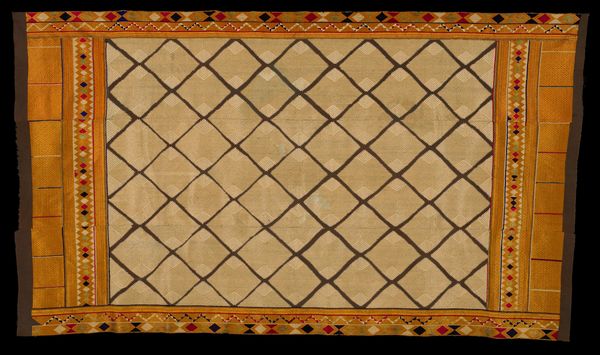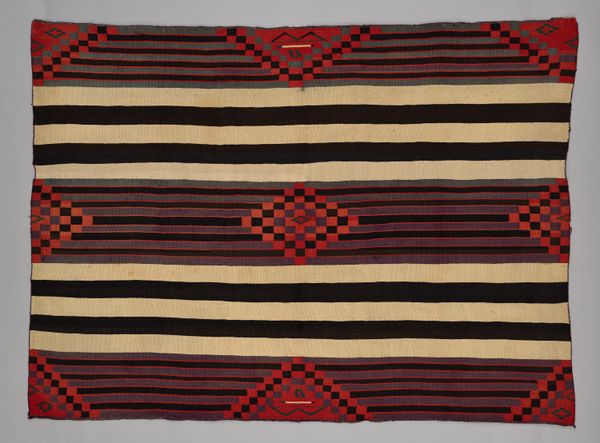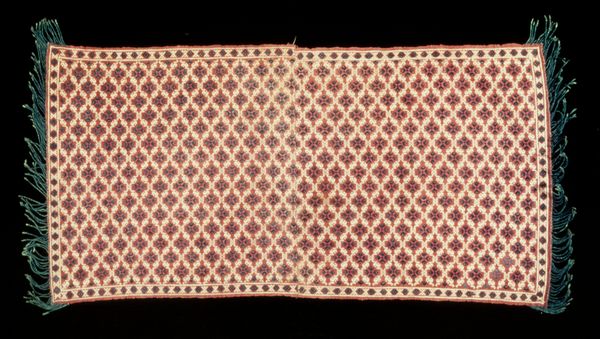
weaving, textile, cotton
#
geometric grid
#
weaving
#
textile
#
geometric pattern
#
repetitive shape and pattern
#
minimal pattern
#
geometric
#
repetition of pattern
#
pattern repetition
#
cotton
#
beaded
#
layered pattern
#
combined pattern
#
repetitive pattern
Dimensions: 35 1/2 x 57 in. (90.17 x 144.78 cm)
Copyright: Public Domain
Curator: Before us is a mid-20th century mud cloth skirt from the Minneapolis Institute of Art. Its anonymous creation is rich in visual language rendered in cotton. Editor: Immediately, I notice how rhythm and order are established through the careful distribution of geometric motifs, creating a serene and stable effect. The color palette seems simple but provides just enough tension to allow your eye to move through the composition. Curator: Indeed. The patterns evoke a range of meanings in different West African cultures. For example, the diamond shape seen repeatedly often symbolizes femininity and the eye. Other geometric figures may be representative of social status. Editor: I find it intriguing how, even as an abstract design, the skirt maintains its grounding symbolism—a subtle interplay between form and context. We see certain recurring symbols, but how are they combined and related to one another? Do the horizontal bands delineate social strata, phases of life, or the stories they tell when they are worn and danced in ritual or celebration? Curator: Your interpretations align with those in various communities where mud cloth is integral. The skill required to achieve the textile’s repetitive design shows immense care. It shows a devotion to method as much as symbolic representation. Do you feel that the structure of pattern enhances meaning? Editor: The regularity certainly helps with readability, especially for those fluent in the symbolism of these patterns. One could almost imagine it being “read” by initiates as a visual encoding of social truths or moral teachings. Curator: I concur, which would suggest that visual and functional aspects were integral, reinforcing its worth beyond merely adornment. Editor: Exactly! It reminds me that visual order often signifies spiritual and social order, allowing one to decode these symbols and gain a deeper sense of continuity. Curator: Thank you. Considering this unique visual order will surely provide our listeners with another viewing context for understanding cultural patterns. Editor: And maybe even find threads to understand something deeper about the way humans communicate identity and aspirations through geometric signs.
Comments
No comments
Be the first to comment and join the conversation on the ultimate creative platform.

